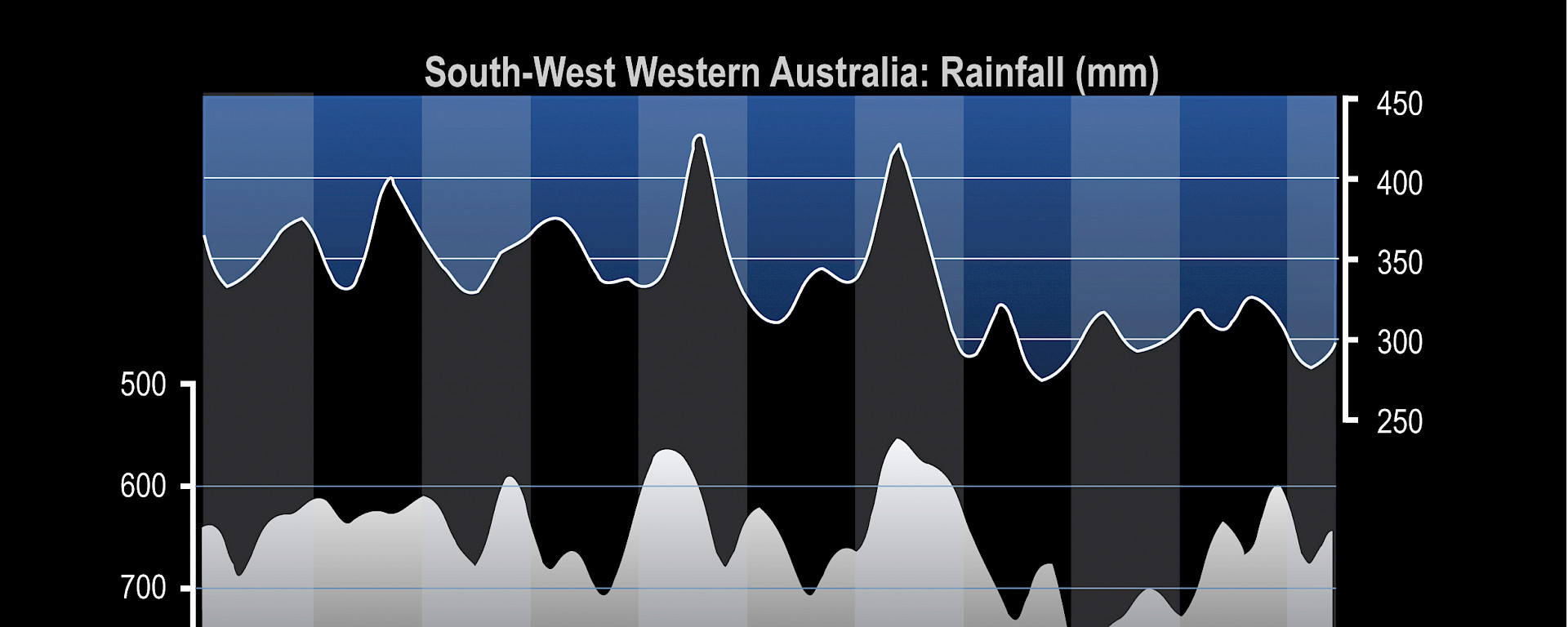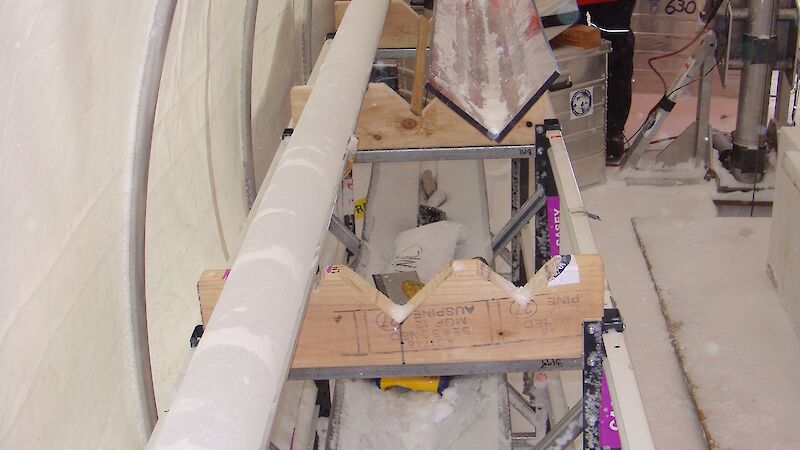Drought has gripped south-west Western Australia for decades, and while climate scientists blame a mix of natural weather cycles and human activity, the precise cause remains open to debate.
With 750 years of climate data revealed in ice cores from Law Dome in Antarctica, ABC science show, Catalyst, reports on the discovery of a link between snowfall there, and decreases in Western Australia’s rainfall.
“The ice core shows how much snow fell at Law Dome each year, and we have compared the modern portion of that with meteorological records from Australia,” says glaciologist Dr Tas van Ommen.
“What we found was amazing. While we were noticing extra moisture in east Antarctica and increasing snowfall, we were seeing dry conditions over south-west Western Australia.”
Since the late 1960s there has been a 15–20% decline in winter rainfall in south-west Western Australia, and at the same time there has been a 10% increase in snowfall at Law Dome. (See graph, which has been inverted to show the see-saw connection between the two sites).
The research indicates that a change in atmospheric circulation patterns off southern Australia is responsible.
“In the past three decades the strength of persistent high and low pressure systems off southern Australia have increased, directing more warm, moist air south towards the coast of Antarctica and dry, cold air north in winter,” Dr van Ommen says.
“This does not appear to be in the range of natural variability: we can see from the ice core that an event like the increased snowfall at Law Dome would only come along once every 38,000 years without some change in climate patterns and, given the connection we see with Western Australia, it would suggest that the drought is also not a natural event.”



